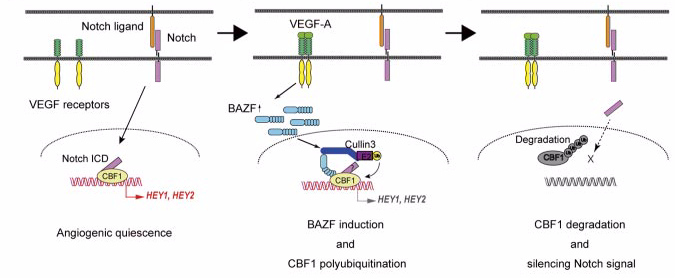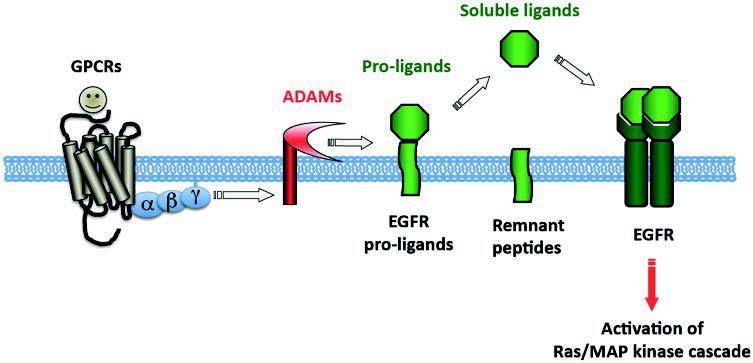Welcome to Higashiyama lab !!
The Higashiyama lab focuses on the regulatory mechanism of growth factors and their receptors, especially, in tumor and vascular biology. Approaches and techniques currently used in our lab include molecular and cell biology, mouse models of disease, genetics, mass-spectrometry and cell-free system.
Research summary
2. Angiogenesis

Angiogenic homeostasis is maintained by a balance between vascular endothelial growth factor (VEGF) and Notch signaling in endothelial cells. We find that B-cell chronic lymphocytic leukemia/lymphoma6-associated zinc finger protein (BAZF) regulates VEGF-Notch signaling. We also find that BAZF-Cullin3 E3 ligase complex degrades CBF1, a Notch target molecule (Blood, 2012; J. Biochem, 2017). We are investigating the functions of Cullin3 in angiogenesis in more details from the stand points of cell-cell adhesion, epigenetics and membrane trafficking (Cancer Sci. 2016; Sci. Rep. 2017; Biol. Open. 2017; J. Cell. Physiol. 2019).
1. Analysis of EGF family ligand

Ectodomain shedding of transmembrane proteins on cell surface is a tightly regulated event, and its dysregulation leads to developmental abnormalities and diseases. As ectodomain shedding of transmembrane proteins provides signal molecules bidirectionally, remnant peptides produced by this event has given rise to more attractive factors to understand signals in intracellular space. We believe that the knowledge obtained from the study of the EGFRs and their ligands provides new insights into the understanding the role of ectodomain shedding and remnant peptide signaling of other transmembrane proteins. In addition, we are focusing on the cell proliferative mechanisms regulated by the Cullin3 system in a variety of cancer cell lines (Biochem. Biophys. Res. Commun. 2018; Cancer Sci. 2019; Biochem. Biophys. Res. Commun. 2019; Mol. Biol. Cell. 2020).